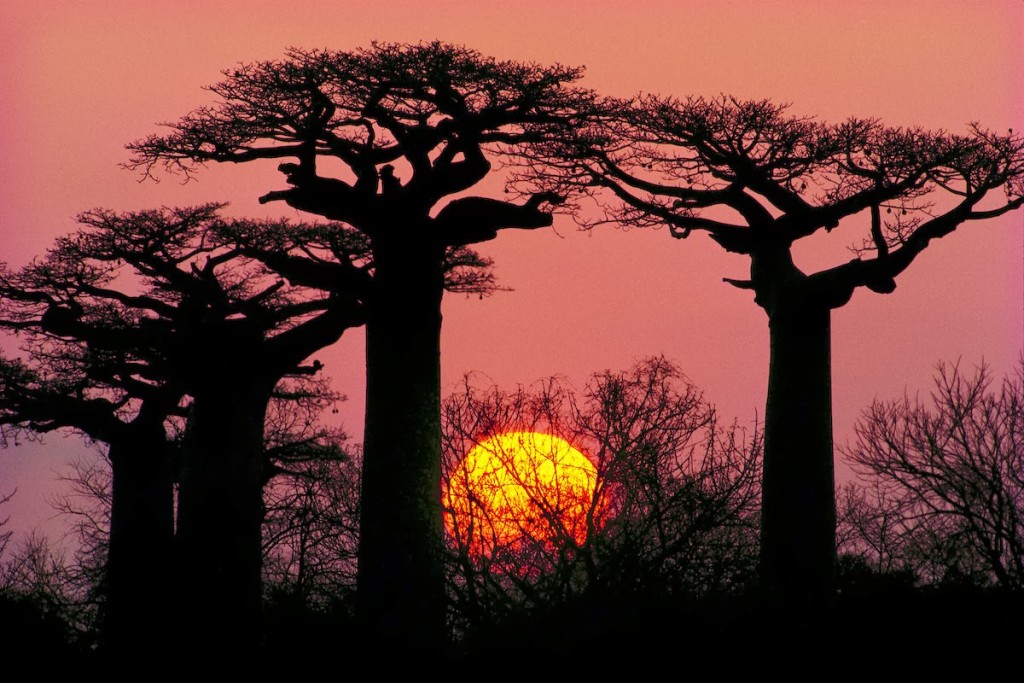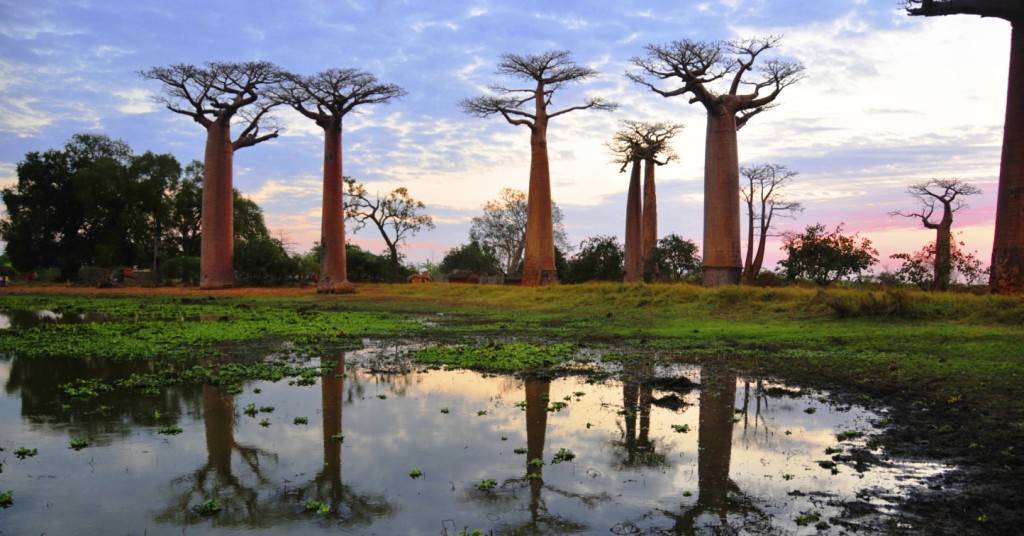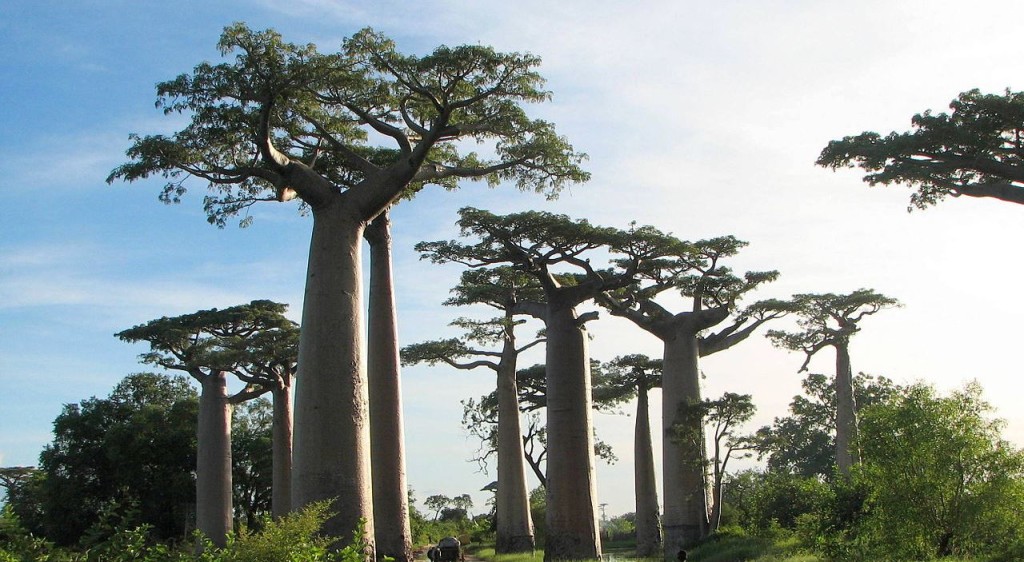Grandidier’s Baobab Tree is the biggest and most re-known of Madagascar’s species of Baobabs. It is also known as “Adansonia Grandidieri”, actually an imposing and unusual tree endemic to the island of Madagascar. It is an endangered species mainly threatened by the encroachment of agricultural land. When you see this unusual tree, you’ll come to know that Grandidier’s baobabs have massive cylindrical trunks almost three meters across, well covered with smooth reddish-grey bark.
The tree can reach 80 to 100 ft in height and at certain times of the year, the flat-topped crowns bear bluish-green palmate leaves, dark brown floral buds, or adorable flowers with white petals. The baobab contains larger dry fruits type kidney-shaped seeds within an edible pulp. The fruit is either collected from the ground, or wooden pegs are hammered into the trunk so the tree can be climbed to collect the fruit.
A French botanist & explorer Alfred Grandidier named “A.grandidieri” in the early 20th century. The tree can be found in south-western Madagascar and it is used to inhabit dry, deciduous forest particularly close to seasonal rivers or lakes. These days, grandidier’s baobab is mainly found in open and agricultural land.
The tree leaf starts from October to May and flowers blossoms from May to August. The fruits were ripe in November and December and it appears that the seeds of the tasty fruit are not dispersed by animals. The smell of flowers just like sour watermelon opens just before or soon after dusk, and all the pollen is released during the first night.
The Baobab Tree is pollinated by nocturnal mammals, like fork-marked lemurs and insects such as Hawk Moth. The lemurs move through the canopies, put in their snouts into the white flowers, and lick nectar from the petal bases, which in resulting pollen being deposited in the lemurs’ faces, while the moth is slightly more effective at pollination since it is able to fly from tree to tree with most of its body covered in pollen.
Moreover, Madagascar has a water problem and lack of water can sometimes be a problem for plantation work. Hence baobab overcomes this by storing water within the fibrous wood of the trunk, as the tree’s diameter fluctuates with rainfall. However; grandidier’s baobab is on the endangered list of the IUCN Red List of 2006.
The useful tree is heavily exploited as seeds and the vitamin C-rich fruit pulp is eaten fresh, and cooking oil is extracted from the oil-rich seeds. The baobab’s thick bark is well composed of hard long fibers that can be used to make ropes.
Moreover, the spongy wood comprises sheets of fiber that’s collected from dead or living trees, dried in the sun, and sold for thatch. Most of these varied uses do not involve the tree being killed, and therefore are likely to pose a great threat to the baobab. The biggest threat to this species has come from the transformation of its forest habitat into agricultural land.
Within these disturbed habitats, there’s an obvious lack of young trees. Fires, seed predication, competition from weeds, and an altered physical environment might be disturbing the capacity of the Madagascar baobab to reproduce, which may have demoralizing consequences for its survival
Read More – Coriander or Coriandrum Sativum ! A Hardy Annual Herb.














